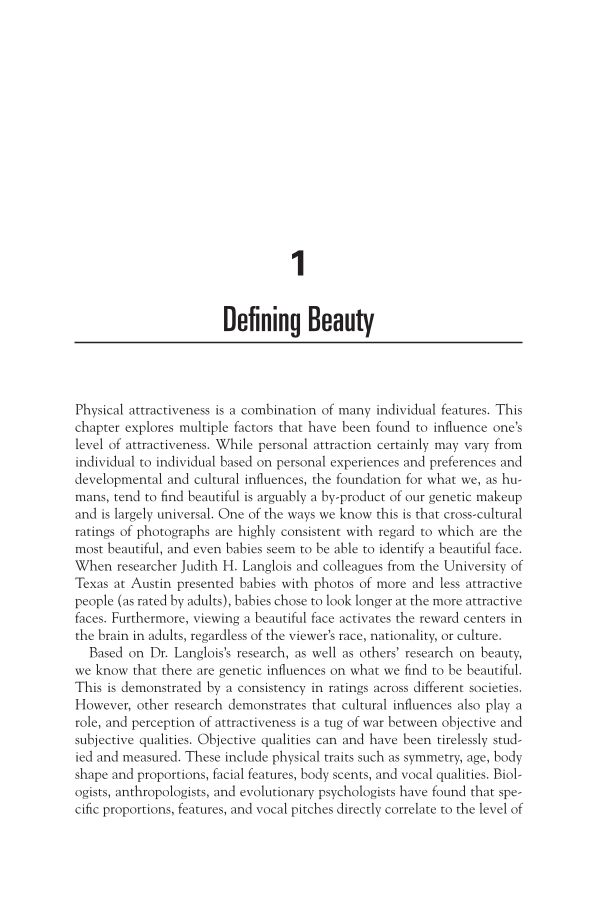Physical attractiveness is a combination of many individual features. This chapter explores multiple factors that have been found to influence one’s level of attractiveness. While personal attraction certainly may vary from individual to individual based on personal experiences and preferences and developmental and cultural influences, the foundation for what we, as hu- mans, tend to find beautiful is arguably a by-product of our genetic makeup and is largely universal. One of the ways we know this is that cross-cultural ratings of photographs are highly consistent with regard to which are the most beautiful, and even babies seem to be able to identify a beautiful face. When researcher Judith H. Langlois and colleagues from the University of Texas at Austin presented babies with photos of more and less attractive people (as rated by adults), babies chose to look longer at the more attractive faces. Furthermore, viewing a beautiful face activates the reward centers in the brain in adults, regardless of the viewer’s race, nationality, or culture. Based on Dr. Langlois’s research, as well as others’ research on beauty, we know that there are genetic influences on what we find to be beautiful. This is demonstrated by a consistency in ratings across different societies. However, other research demonstrates that cultural influences also play a role, and perception of attractiveness is a tug of war between objective and subjective qualities. Objective qualities can and have been tirelessly stud- ied and measured. These include physical traits such as symmetry, age, body shape and proportions, facial features, body scents, and vocal qualities. Biol- ogists, anthropologists, and evolutionary psychologists have found that spe- cific proportions, features, and vocal pitches directly correlate to the level of 1 Defining Beauty
Document Details My Account Print multiple pages
Print
You have printed 0 times in the last 24 hours.
Your print count will reset on at .
You may print 0 more time(s) before then.
You may print a maximum of 0 pages at a time.


















































































































































































































































































